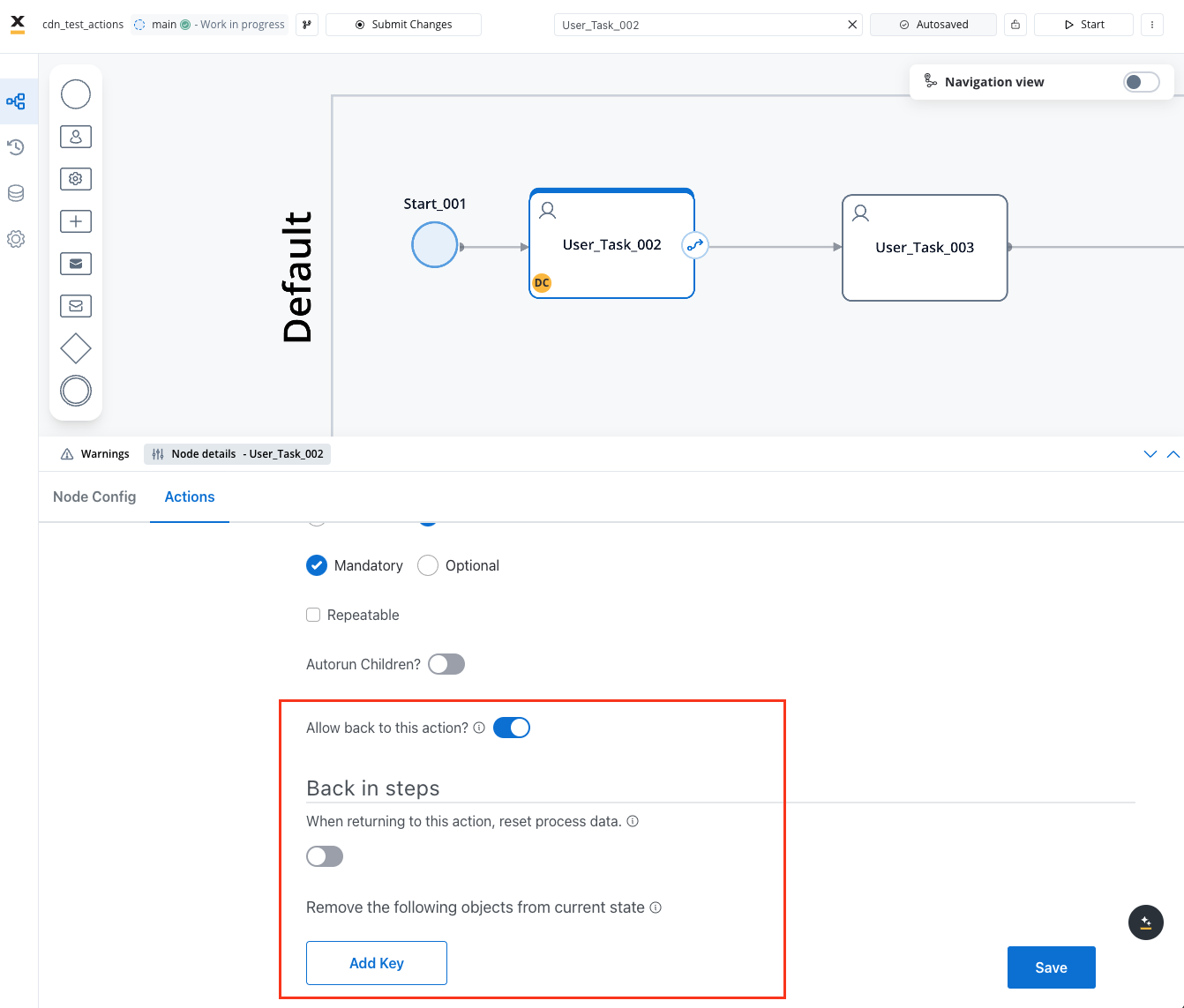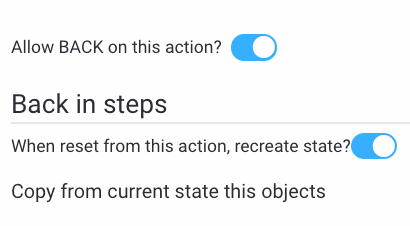
Back Action Configuration
What is token resetting?
Token Concept
In FlowX.AI, a token represents the current position within a process instance. It moves from one node to another as the process executes, carrying process data and state information. Normally, tokens advance forward through the process flow, but sometimes you need to allow users to go back to previous steps.
Process Tokens
Learn more about tokens and how they drive process flow
Process Instances
Understand how processes execute in FlowX.AI
Why use backwards navigation?
User Experience
Allows users to correct mistakes or review previous inputs without starting over
Process Flexibility
Creates more natural and less rigid process flows that adapt to user needs
Data Preservation
Maintains important data while allowing selective changes to specific fields
Reduced Abandonment
Decreases process abandonment rates by allowing users to navigate freely
How token resetting works
When a user navigates backwards in a process:- The current token is marked as aborted
- A new token is created at the target node (the previous step)
- Data is selectively copied from the original token to the new one
- Any subprocesses started between the original and new positions are aborted
- The process continues from the reset position with the new token
The token can only be reset to specific actions on specific nodes that have been configured to allow backwards navigation.
Configuring backwards navigation
1
Identify Target Nodes
First, determine which nodes in your process should allow users to navigate back to them. Typically, these are:
- Key decision points
- Form submission steps
- Points where users might need to correct previous inputs
- The beginning of logical sections in your process
2
Configure Node Actions
- Select the node that should be a target for backwards navigation
- Add or edit an action on this node
- In the action configuration, enable the Allow BACK on this action? option

Back Action Configuration
3
Configure Data Handling
When a token is reset, you need to decide which data to retain and which to discard. Configure this using:
- Remove the following objects from current state: Specify process keys that should be deleted when navigating back to this action
- Copy the following objects from current state: Specify process keys that should retain their data from before the navigation
4
Implement UI Navigation
Add navigation controls in your user interface:
- Add a “Back” button to relevant screens
- Configure the button to trigger the action with back functionality
- Ensure the UI updates appropriately when the user navigates back

Back Navigation in Action
Use cases for backwards navigation
Multi-Step Forms
Multi-Step Forms
In applications with multi-step forms or wizards, backwards navigation allows users to review and edit their inputs across different steps before final submission.
Decision Correction
Decision Correction
When users make selections that lead down specific process paths, back functionality lets them change their mind and explore alternative options.
Error Correction
Error Correction
If validation occurs after a form submission and errors are found, users can navigate back to fix issues while preserving other valid inputs.
Process Review
Process Review
In complex workflows like loan applications or onboarding processes, users often need to review previous sections before completing the process.

